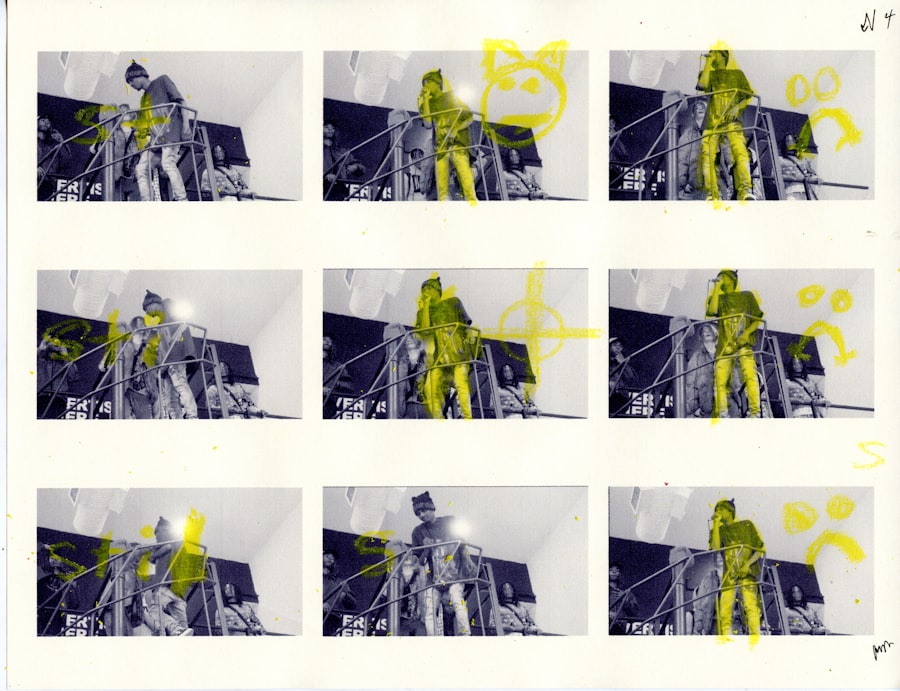In the realm of visual design, the terms “organic” and “digital” represent two distinct yet complementary approaches. Organic elements refer to those that are derived from nature or mimic natural forms. This can include textures, colors, and shapes found in the environment, such as wood grain, leaf patterns, or the fluidity of water.
These elements evoke a sense of warmth and authenticity, often resonating with viewers on a deeper emotional level. When you think of organic design, you might envision earthy tones, flowing lines, and a sense of harmony that reflects the natural world. On the other hand, digital elements are products of technology and modern design practices.
They encompass everything from pixelated graphics to sleek, geometric shapes created through software. Digital design allows for precision and versatility, enabling you to manipulate images and create complex compositions that would be challenging to achieve with traditional methods. The juxtaposition of organic and digital elements can create a dynamic visual experience, where the warmth of nature meets the crispness of technology.
Understanding these two concepts is crucial for any designer looking to create compelling visuals that resonate with their audience.
Key Takeaways
- Organic elements refer to natural, free-flowing shapes and textures, while digital elements are more geometric and precise.
- Combining organic and digital elements in visuals can create a visually appealing and dynamic composition.
- Techniques for integrating organic and digital elements include layering, blending, and using a variety of textures and shapes.
- Successful visual designs that combine organic and digital elements include branding, advertising, and web design.
- To create harmonious visuals, balance the use of organic and digital elements and consider the overall composition and visual hierarchy.
- The future of combining organic and digital elements in visual design will likely involve more advanced technology and seamless integration of the two elements.
Exploring the benefits of combining organic and digital elements in visuals
Emotional Resonance and Innovation
This fusion allows you to tap into the emotional resonance of organic forms while leveraging the precision and innovation of digital techniques. As a result, your designs can evoke feelings of nostalgia and comfort while simultaneously feeling fresh and modern. Moreover, this combination can enhance user engagement.
Captivating Attention in a Digital Age
In an age where consumers are bombarded with digital content, incorporating organic elements can provide a refreshing contrast that captures attention. For instance, using natural textures or colors in a digital interface can create a more inviting atmosphere, encouraging users to interact with your design. This approach not only makes your visuals more appealing but also fosters a connection between the viewer and the content, leading to increased retention and satisfaction.
Elevating Visual Storytelling
By understanding these benefits, you can strategically incorporate both organic and digital elements to elevate your visual storytelling.
Techniques for integrating organic and digital elements in visual designs

Integrating organic and digital elements requires a thoughtful approach to ensure that both aspects complement each other rather than compete for attention. One effective technique is layering. By placing organic textures or images over digital backgrounds or graphics, you can create depth and dimension in your designs.
For example, consider using a high-resolution photograph of a natural landscape as a backdrop while overlaying geometric shapes or digital patterns. This layering technique not only adds visual interest but also creates a harmonious balance between the two elements. Another technique involves color harmony.
When combining organic and digital elements, it’s essential to choose a color palette that reflects both worlds. Earthy tones like greens, browns, and blues can be paired with vibrant digital hues to create a cohesive look. You might experiment with gradients that transition from natural colors to more saturated digital shades, allowing for a seamless blend between the two styles.
Additionally, consider using organic shapes within your digital designs—curved lines and asymmetrical forms can soften the rigidity often associated with digital graphics, resulting in a more inviting visual experience.
Examples of successful visual designs that combine organic and digital elements
Numerous designers have successfully merged organic and digital elements to create stunning visuals that resonate with audiences. One notable example is the work of graphic designer Jessica Walsh, who often incorporates natural textures into her bold, colorful compositions. Her ability to blend organic forms with striking typography showcases how these two elements can work together to create impactful designs that capture attention while conveying a message.
Another inspiring case is the branding for the outdoor apparel company Patagonia. Their marketing materials frequently feature breathtaking photographs of nature alongside clean, modern typography and graphic overlays. This combination not only highlights their commitment to environmental sustainability but also creates a visually appealing aesthetic that draws consumers in.
By showcasing real-world landscapes alongside sleek design elements, Patagonia effectively communicates its brand values while engaging its audience on multiple levels.
Tips for creating harmonious and balanced visuals using organic and digital elements
Creating harmonious visuals that effectively combine organic and digital elements requires careful consideration and experimentation. One key tip is to maintain consistency in your design choices. Whether you’re selecting colors, textures, or shapes, ensure that they align with the overall theme of your project.
For instance, if you’re using earthy tones for your organic elements, try to incorporate similar hues in your digital components to create a cohesive look. Additionally, pay attention to scale and proportion when integrating these elements. Organic shapes often have an inherent fluidity that can be disrupted by rigid digital forms.
To achieve balance, consider adjusting the size of your organic elements so they harmonize with their digital counterparts. This might involve resizing images or altering their placement within your composition to create a sense of flow and unity. By being mindful of these aspects, you can craft visuals that feel intentional and well-integrated.
The future of combining organic and digital elements in visual design

As technology continues to evolve, the future of combining organic and digital elements in visual design looks promising. With advancements in augmented reality (AR) and virtual reality (VR), designers will have new opportunities to explore this fusion in immersive ways. Imagine creating environments where users can interact with both natural landscapes and digital graphics seamlessly—this could revolutionize how we experience visual content.
Moreover, as sustainability becomes an increasingly important focus in design practices, the integration of organic elements will likely gain even more significance. Designers may find innovative ways to incorporate eco-friendly materials or nature-inspired motifs into their digital work, reflecting a growing awareness of environmental issues. This trend could lead to a new wave of visuals that not only captivate audiences but also promote a deeper connection with nature.
In conclusion, understanding the interplay between organic and digital elements is essential for any designer looking to create compelling visuals. By exploring their benefits, employing effective integration techniques, and drawing inspiration from successful examples, you can craft harmonious designs that resonate with viewers on multiple levels. As we look toward the future, embracing this fusion will undoubtedly lead to exciting new possibilities in visual storytelling.



